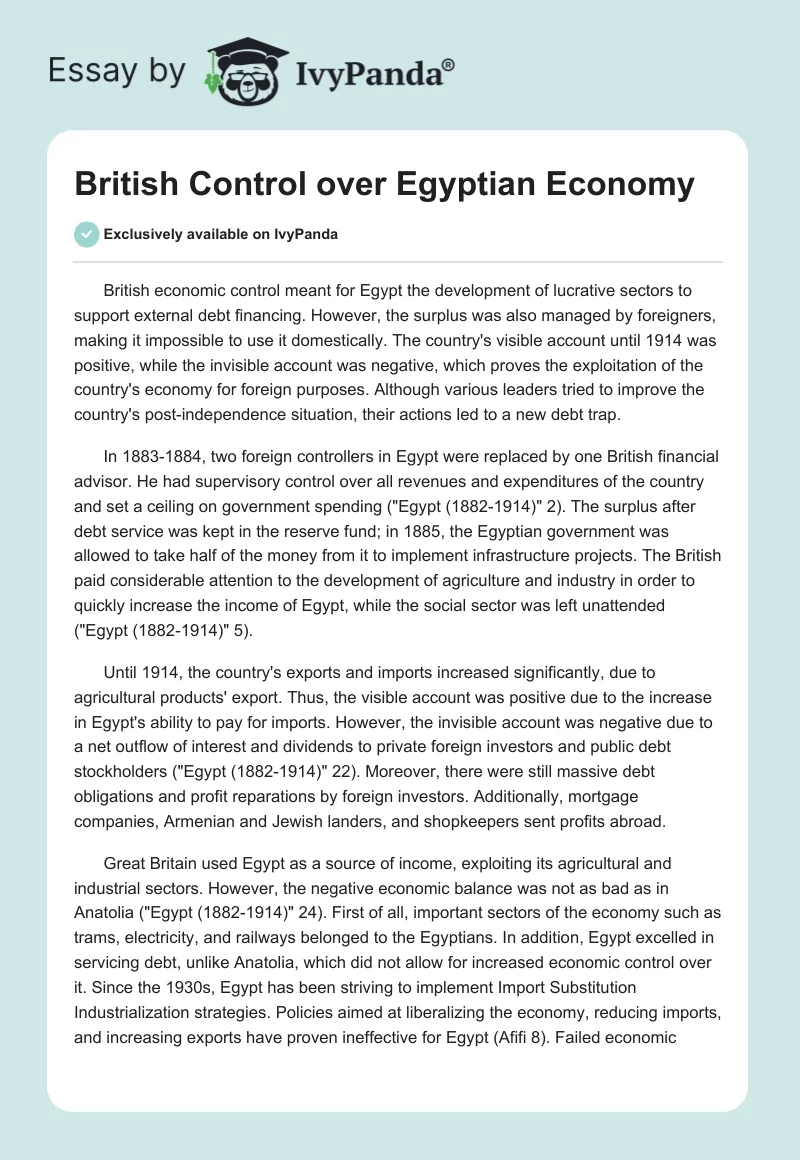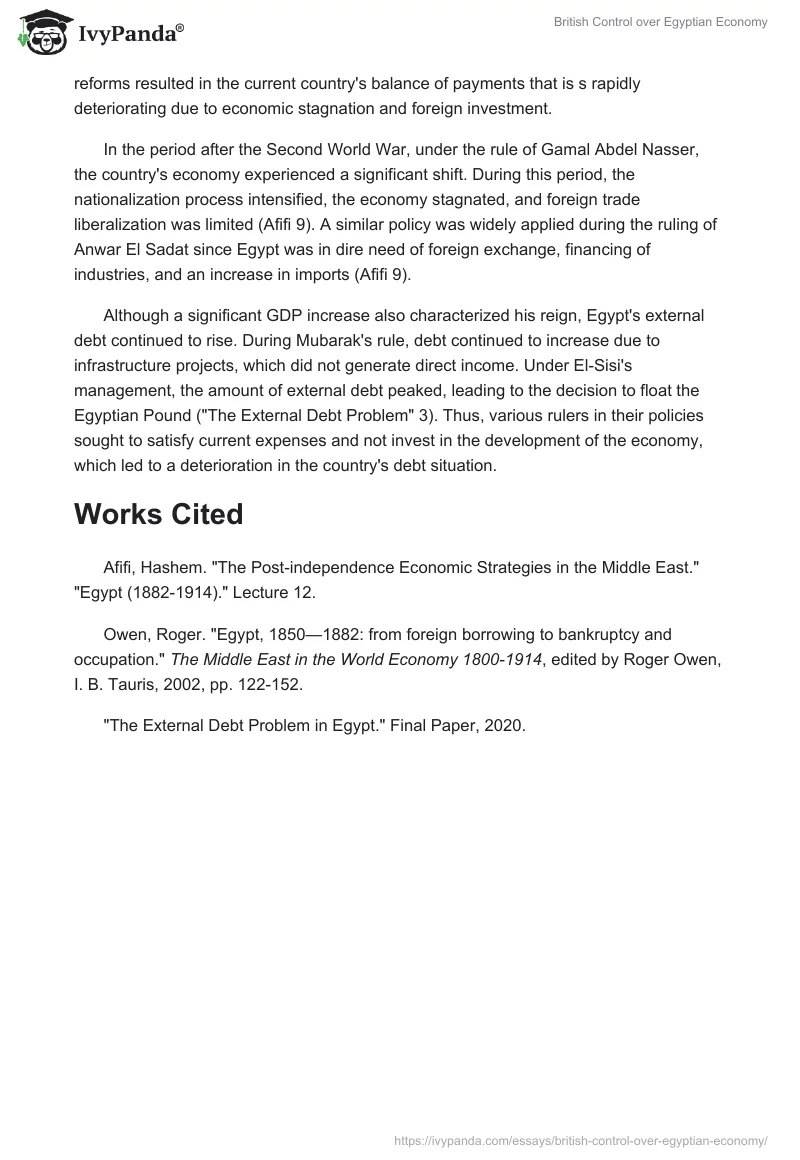British economic control meant for Egypt the development of lucrative sectors to support external debt financing. However, the surplus was also managed by foreigners, making it impossible to use it domestically. The country’s visible account until 1914 was positive, while the invisible account was negative, which proves the exploitation of the country’s economy for foreign purposes. Although various leaders tried to improve the country’s post-independence situation, their actions led to a new debt trap.
In 1883-1884, two foreign controllers in Egypt were replaced by one British financial advisor. He had supervisory control over all revenues and expenditures of the country and set a ceiling on government spending (“Egypt (1882-1914)” 2). The surplus after debt service was kept in the reserve fund; in 1885, the Egyptian government was allowed to take half of the money from it to implement infrastructure projects. The British paid considerable attention to the development of agriculture and industry in order to quickly increase the income of Egypt, while the social sector was left unattended (“Egypt (1882-1914)” 5).
Until 1914, the country’s exports and imports increased significantly, due to agricultural products’ export. Thus, the visible account was positive due to the increase in Egypt’s ability to pay for imports. However, the invisible account was negative due to a net outflow of interest and dividends to private foreign investors and public debt stockholders (“Egypt (1882-1914)” 22). Moreover, there were still massive debt obligations and profit reparations by foreign investors. Additionally, mortgage companies, Armenian and Jewish landers, and shopkeepers sent profits abroad.
Great Britain used Egypt as a source of income, exploiting its agricultural and industrial sectors. However, the negative economic balance was not as bad as in Anatolia (“Egypt (1882-1914)” 24). First of all, important sectors of the economy such as trams, electricity, and railways belonged to the Egyptians. In addition, Egypt excelled in servicing debt, unlike Anatolia, which did not allow for increased economic control over it. Since the 1930s, Egypt has been striving to implement Import Substitution Industrialization strategies. Policies aimed at liberalizing the economy, reducing imports, and increasing exports have proven ineffective for Egypt (Afifi 8). Failed economic reforms resulted in the current country’s balance of payments that is s rapidly deteriorating due to economic stagnation and foreign investment.
In the period after the Second World War, under the rule of Gamal Abdel Nasser, the country’s economy experienced a significant shift. During this period, the nationalization process intensified, the economy stagnated, and foreign trade liberalization was limited (Afifi 9). A similar policy was widely applied during the ruling of Anwar El Sadat since Egypt was in dire need of foreign exchange, financing of industries, and an increase in imports (Afifi 9).
Although a significant GDP increase also characterized his reign, Egypt’s external debt continued to rise. During Mubarak’s rule, debt continued to increase due to infrastructure projects, which did not generate direct income. Under El-Sisi’s management, the amount of external debt peaked, leading to the decision to float the Egyptian Pound (“The External Debt Problem” 3). Thus, various rulers in their policies sought to satisfy current expenses and not invest in the development of the economy, which led to a deterioration in the country’s debt situation.
Works Cited
Afifi, Hashem. “The Post-independence Economic Strategies in the Middle East.” “Egypt (1882-1914).” Lecture 12.
Owen, Roger. “Egypt, 1850—1882: from foreign borrowing to bankruptcy and occupation.” The Middle East in the World Economy 1800-1914, edited by Roger Owen, I. B. Tauris, 2002, pp. 122-152.
“The External Debt Problem in Egypt.” Final Paper, 2020.


